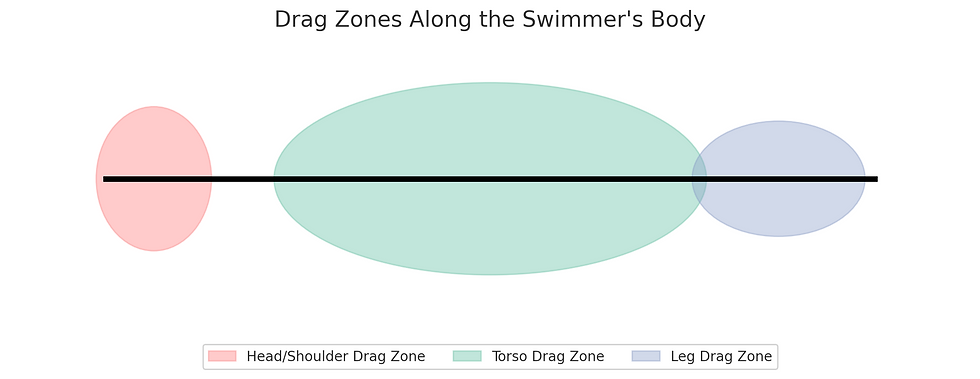50m Freestyle Technique: How Sprint Champions Slice Through Water at Top Speed
- Omar Ahmed Elewa
- Jun 4
- 2 min read
Swimming 50 meters in 20 seconds means holding an average velocity of 2.5 meters per second. But speed isn’t just about power—it’s about precision. In a race where even the smallest drag or hesitation can add hundredths to the clock, elite sprinters rely on world-class technique to stay fast and efficient. This post explores the biomechanics of top-tier 50m freestyle swimming.
The Start and Underwater Phase
The start contributes up to 30% of total race time.
Reaction time (~0.60s) and block explosiveness are crucial.
The best sprinters (e.g., Dressel, Manaudou) travel 15m in under 5 seconds.
Underwater dolphin kicks (typically 5–7) at >2.8 m/s can be the fastest part of the swim.
What Makes a Fast Start:
Optimal body angle on entry
Deep, powerful dolphin kicks
Tight streamline with minimal drag
Stroke Rate vs. Stroke Length

Top sprinters hit 60–62 stroke cycles per minute (~0.95–1.0s per full stroke cycle).
Stroke length must be preserved—more strokes do not equal more speed.
Efficiency comes from continuous propulsion with no dead spots in the stroke.
Keys to Efficient Stroke Mechanics:
High elbow catch for powerful pull
Straight-arm recovery to maximize speed and turnover
Minimal head movement and low breathing (or none at all)
Body Position and Streamline
Sprinters maintain a high, rigid bodyline to reduce frontal drag.
Core stability keeps the hips and legs high.
Shallow, fast flutter kicks keep propulsion without creating turbulence.
Drag Reduction Strategies:

Flat, aligned head position
Engaged core and glutes to hold posture
Narrow kick amplitude (~30cm max)
The No-Breath Strategy
Most elite sprinters don’t breathe during the race.
Breathing disrupts streamline and stroke timing.
Holding breath maintains perfect body alignment and rhythm.
Finishing with Precision
Last stroke must hit the wall at full extension.
Gliding or short strokes at the finish can cost the race.
Sprinters practice finish timing repeatedly under fatigue.
Mastering 50m Freestyle Technique for Peak Speed
The best sprinters in the world refine every technical detail: from their dive and underwater breakout to their last stroke. Mastering 50m freestyle technique means balancing stroke rate and length, reducing drag, and executing flawless transitions with zero wasted motion. The smoother the swim, the faster the time.
At 2.5 m/s, there’s no room for inefficiency. Every movement must convert power into forward motion with minimal resistance. From start to finish, elite sprinters win not just by swimming harder—but by swimming smarter.
Next Up: Sprint Training That Builds Champions: Inside a 50m Freestyler’s Regimen






Comments